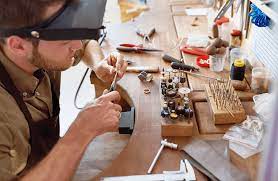In the modern era, Jewelry repair has evolved to reflect changing tastes and styles. Contemporary designers experiment with unconventional materials and innovative designs, blurring the lines between traditional and avant-garde. Customization has become increasingly popular, allowing individuals to create unique pieces that resonate with their personal style.
Sustainable and ethical practices have also gained prominence in the jewelry industry. Consumers are now more conscious of the environmental and social impact of their purchases, driving a demand for responsibly sourced materials and ethical manufacturing processes.
The Rise of Artisan Craftsmanship:
In an era dominated by mass production, artisan craftsmanship has experienced a resurgence. Many consumers seek out handmade and bespoke jewelry, appreciating the attention to detail and unique character that artisan pieces offer. Craftsmen around the world are honing traditional techniques while infusing contemporary elements, creating jewelry that tells a story and reflects the passion of its creator.
Conclusion:
Jewelry, with its timeless allure and cultural significance, continues to be a cherished form of self-expression and adornment. From ancient civilizations to the present day, it has evolved, adapting to changing styles and societal values. Whether passed down as a family heirloom, worn to celebrate love, or chosen as a personal statement, jewelry remains an art form that transcends time, embodying the beauty and individuality of the human experience.


